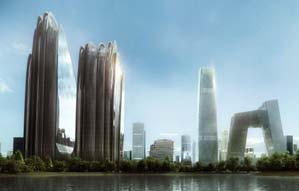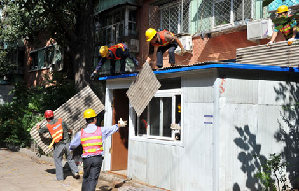Japanese architect eyes Ningbo project
Dan's father Ikuma Dan, a renowned composer of classical music and former chairman of the Japan-China Cultural Exchange Association, came to China dozens of times to take part in cultural exchanges. He passed away after a heart attack during a cultural exchange mission in Suzhou in 2001. And Dan has been carrying on his work ever since.
"This project is extremely significant to me. The cultural center of Zen Buddhism has historically been China, and many important Japanese Zen priests, such as Dogen Zenji and Myoan Yosai, learned Zen Buddhism in Ningbo in the 12th century and brought it back to Japan, which became the very core of Japanese culture."
One of the three architects originally commissioned to plan the site for the World Expo 2005 at Aichi in Japan, Dan fought with the Japanese government for two years, protesting their disguised plan that would have destroyed the Kaisho forest. The campaign finally alerted the World Wide Fund for Nature, the International Exhibitions Bureau and the public, who stood up to protest and the Kaisho forest was preserved.
"Architects have such small power yet sometimes we have to stand up. I realized the architects' role is not just to build something, but to show our ideas or at least to encourage good discussion," Dan says.
Dan first came to China with his father in 1978 and has witnessed how China's urban landscape has changed in the last few decades as skyscrapers replace traditional buildings. While he is cautious about commenting on his counterparts work in China, he says similar trends are in fashion in Japan.
"The situation in Japan is the same. Everybody wants to build the highest building. The high-rise towers, in many cases, destroy the traditional urban design," he says.
"Architects always try to add something and make it better, but we should not complete. All we can do is open up for the future. If we complete it too much, nobody in the future can touch it. If we totally erase it, of course you can draw what you want, but that probably won't last long."
| China's top 10 iconic architectures announced |


















